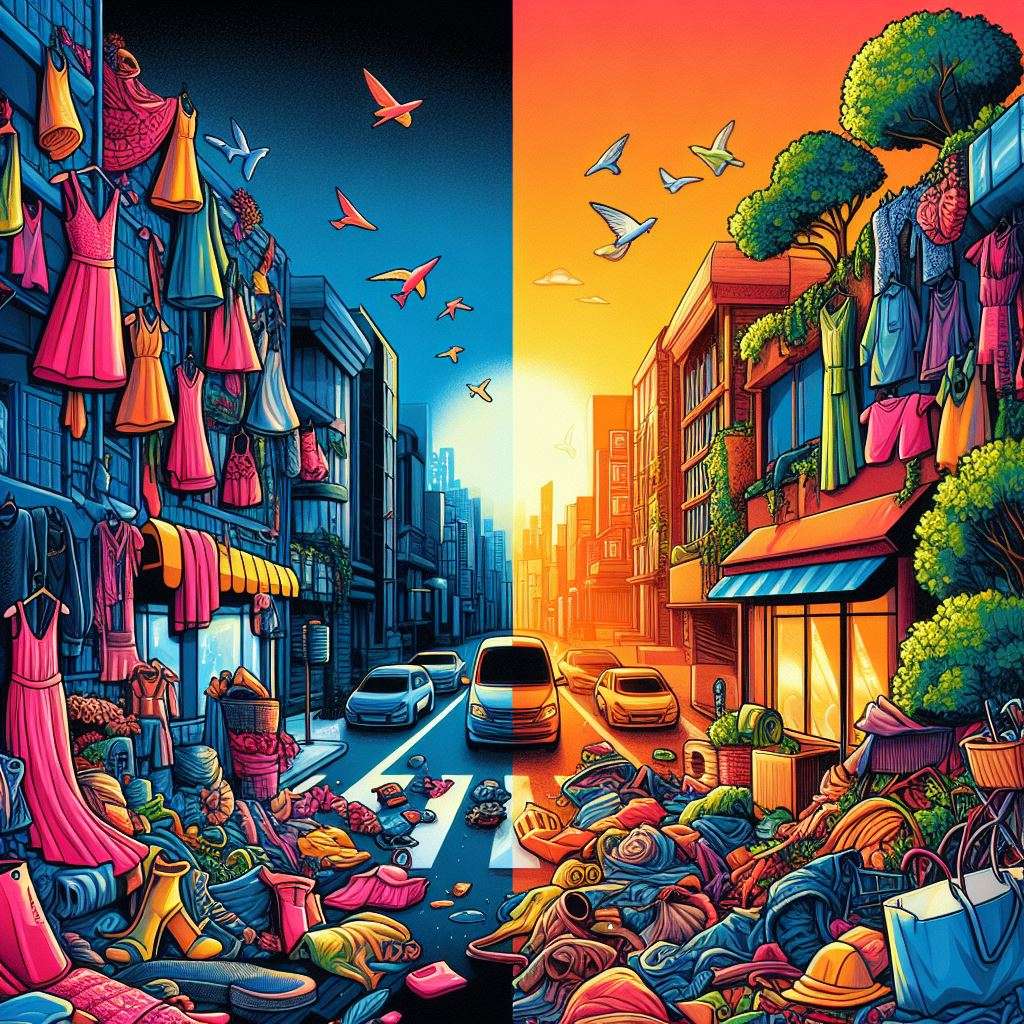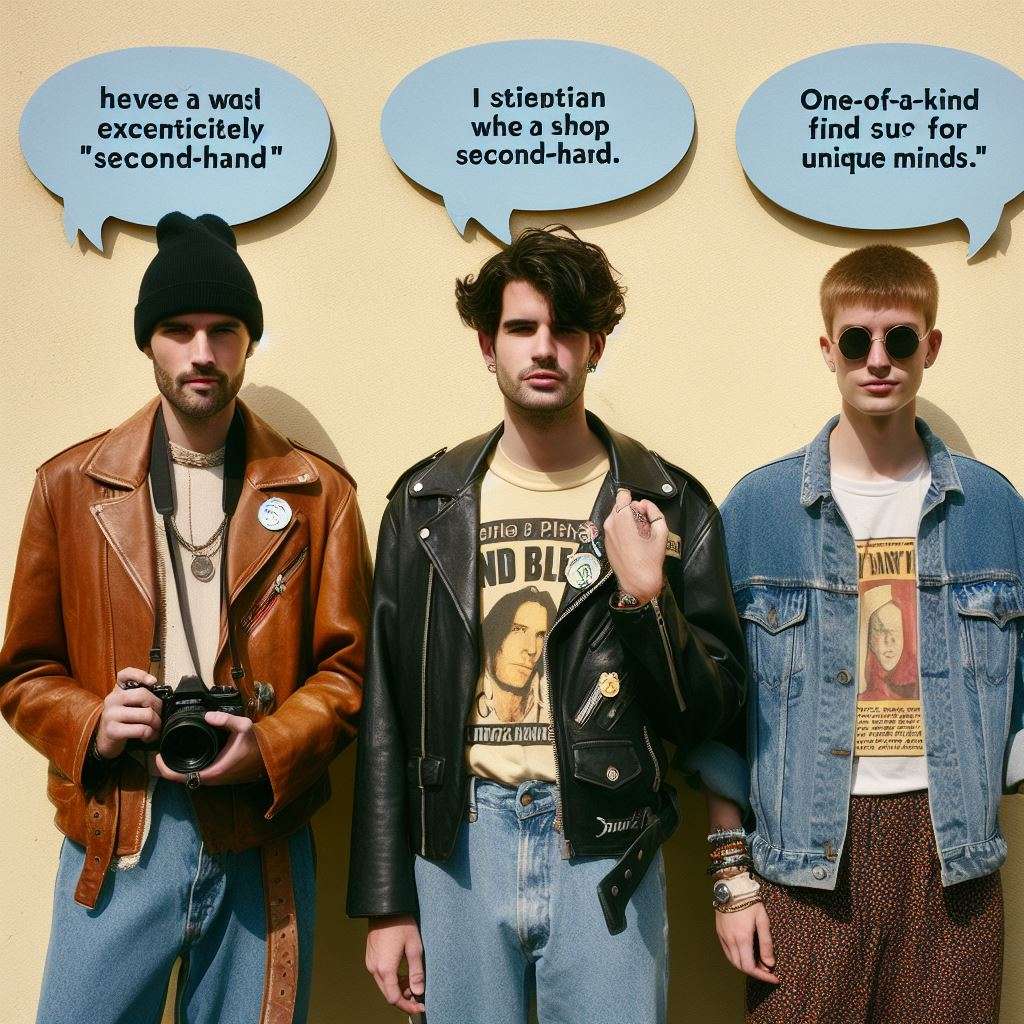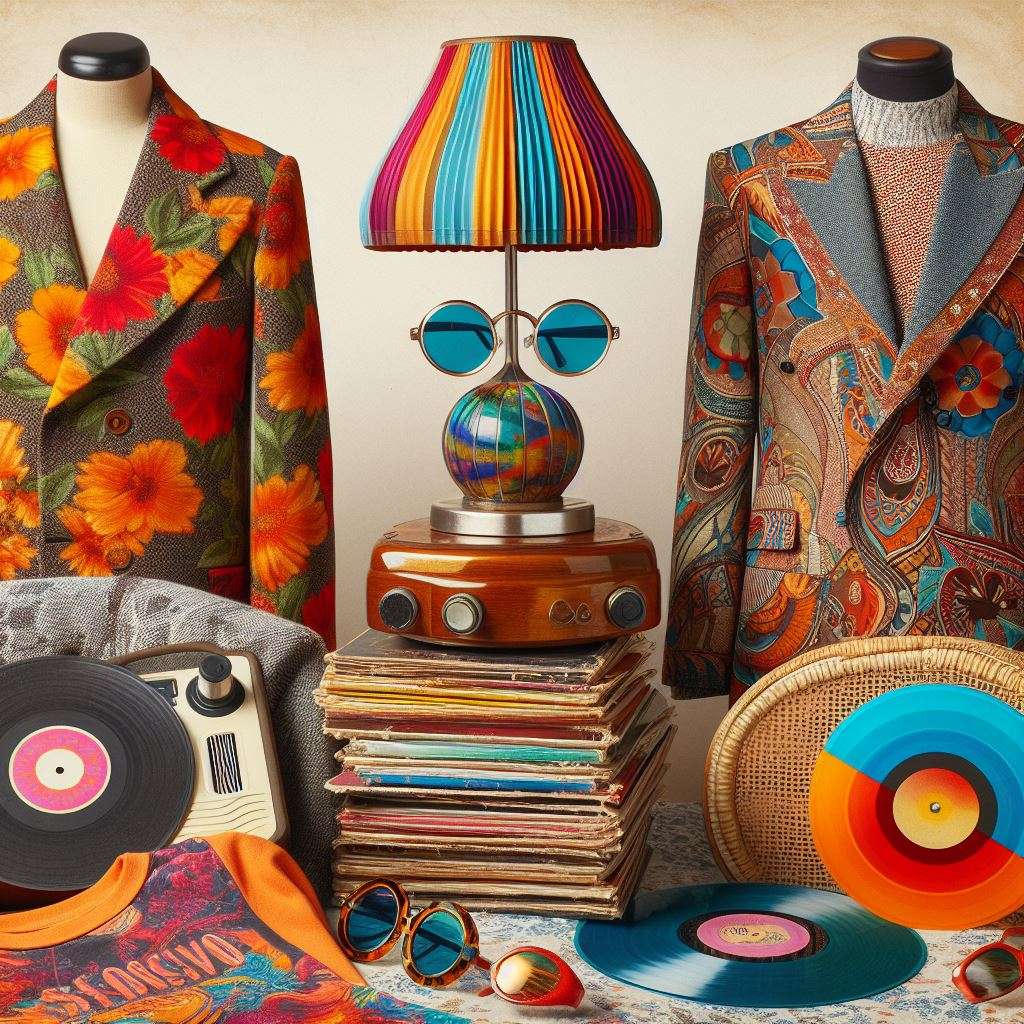The drawbacks of fast fashion and the benefits of second-hand clothing

Imagine this: you are browsing through a clothing store, feeling overwhelmed by the endless racks of clothes that are constantly changing and updating. You are tempted to buy the latest trends, but you also worry about the environmental and social costs of fast fashion. You wonder if there is a better way to dress yourself without harming the planet or your wallet.
There is second-hand clothing. Second-hand clothing is any clothing that has been previously worn or owned by someone else. You can find it in various places, such as thrift stores, online platforms, swap parties, or your closet. By choosing second-hand clothing, you can enjoy many advantages, such as:
- Saving money: You can buy clothes at a fraction of their original price, and sometimes even find brand-new items with tags still attached.
- Reducing waste: You can prevent clothes from ending up in landfills, where they emit greenhouse gases and pollute the soil and water.
- Expressing yourself: You can discover unique and fun pieces that reflect your personality and style, and that you won’t see on anyone else.
The featured image illustrates the difference between fast fashion and second-hand clothing. On the left, you see a pile of identical and boring clothes that are mass-produced and often low-quality. On the right, you see a colorful and diverse collection of hand-selected clothes with a story behind them. Which one would you rather wear?
How to find treasure in thrift stores
One of the most exciting ways to shop for second-hand clothing is to visit thrift stores. Thrift stores are places where you can find pre-owned clothes that are donated or sold at low prices. They are often run by charities or non-profit organizations that use the proceeds to support various causes. Thrift stores are like treasure chests, where you never know what you might find. You can stumble upon vintage gems, designer labels, or quirky items that you won’t see anywhere else. You can also enjoy the thrill of the hunt, the satisfaction of finding a bargain, and the joy of giving back to the community.
Different types of thrift stores cater to different tastes and budgets. Some of the most common ones are:
- Charity shops: These are stores that sell donated clothes and other goods to raise money for a specific charity or cause. They are usually staffed by volunteers and offer a wide range of items at very low prices. You can find anything from essentials to rare collectibles, and you can also donate your unwanted clothes to support a good cause.
- Vintage boutiques: These stores specialize in selling clothes from a certain era or style, such as the 1950s, the 1980s, or bohemian chic. They are usually curated by experts and offer high-quality and authentic pieces that reflect the fashion trends of the past. You can find unique and timeless pieces that can add some flair and nostalgia to your wardrobe.
- Consignment stores: These are stores that sell clothes that are consigned by their owners, who receive a percentage of the sale price. They are usually more selective and upscale than charity shops and offer more current and trendy items that are in good condition. You can find designer brands, luxury items, or seasonal pieces that are still fashionable and relevant.
To help you find the best thrift store for you, take this quiz and answer a few questions about your preferences and goals.
QUIZ
What is your main reason for shopping second-hand?
- A) To save money and reduce waste
- B) To find unique and vintage pieces
- C) To update your wardrobe with trendy items
What is your budget for second-hand shopping?
- A) As low as possible
- B) Moderate
- C) High
What is your preferred style of clothing?
- A) Casual and comfortable
- B) Retro and eclectic
- C) Chic and sophisticated
If you answered mostly A, you should try charity shops. They are the cheapest and most eco-friendly option for second-hand shopping. You can find a variety of items that are functional and durable, and you can also support a worthy cause.
If you answered mostly B, you should try vintage boutiques. They are the best option for finding unique and vintage pieces that can spice up your style. You can find items that are rare and original, and you can also appreciate the history and culture behind them.
If you answered mostly C, you should try consignment stores. They are the best option for finding trendy and upscale items that can refresh your wardrobe. You can find items that are fashionable and high-quality, and you can also get a good deal on them.
How to transform second-hand clothing with upcycling
Another way to give clothes a new life is to upcycle them. Upcycling is the process of transforming old or unwanted clothes into new and improved ones. It can involve altering, repairing, embellishing, or combining clothes to create something new and different. Upcycling is a great way to unleash your creativity, express your individuality, and extend the lifespan of your clothes.
There are many ways to upcycle your second-hand finds or your clothes. Here are some examples of simple and fun projects that you can try:
- Turn a pair of jeans into a skirt, shorts, or a tote bag
- Cut off the sleeves or collar of a shirt to create a new neckline or style
- Add patches, embroidery, or beads to a jacket, sweater, or dress to make it more colorful and personalized
- Tie-dye, bleach, or paint a plain t-shirt, hoodie, or scarf to give it a new look and vibe
- Mix and match different fabrics, patterns, or prints to create a patchwork or collage effect
To make your upcycling projects easier and more enjoyable, here are some tips for shopping at thrift stores:
- Know your size and measurements: Since thrift store clothes may not have accurate labels or may have shrunk or stretched over time, it is important to know your size and measurements before you shop. You can use a tape measure to measure yourself or your favorite clothes and compare them with the clothes you find at the thrift store. You can also try on the clothes if possible, or use a fitting app to see how they look on you.
- Understand fabric quality and care: Since thrift store clothes may have been worn or washed many times, it is important to check the fabric quality and care instructions before you buy. You can look at the tags, labels, or symbols on the clothes to see what kind of fabric they are made of, how to wash them, and how to iron them. You can also feel the fabric with your hands to see if it is soft, smooth, or sturdy. You want to avoid fabrics that are too thin, rough, or damaged, as they may not last long or look good after upcycling.
- Be open to unexpected finds: One of the best things about thrift store shopping is that you never know what you might find. You may come across clothes that are not your usual style, size, or color, but that may have some potential for upcycling. You may also find clothes that are already upcycled by someone else, and that may inspire you to do the same. You should be open to trying new things and experimenting with different combinations, as you may discover some hidden gems and surprises.
How to support ethical and eco-friendly clothing brands
If you are looking for more options to shop sustainably, you can also check out some of the ethical and eco-friendly clothing brands that are emerging in the market. These are brands that are committed to producing clothes that are ethical, eco-friendly, and fair. They use recycled or organic materials, minimize waste and pollution, and ensure fair wages and working conditions for their workers. They also offer stylish and quality clothes that are designed to last and to suit your needs and preferences.
Some of the popular and reputable ethical and eco-friendly clothing brands or online platforms are:
- Reformation: This is a brand that makes clothes from recycled or sustainable fabrics, such as deadstock, organic cotton, or Tencel. They also use renewable energy, carbon offsets, and water-saving techniques in their production. They offer chic and feminine clothes that are flattering and versatile, such as dresses, tops, jeans, and swimwear.
- Patagonia: This is a brand that makes clothes from recycled or organic materials, such as polyester, cotton, or hemp. They also use fair trade practices, environmental activism, and social responsibility in their business. They offer functional and durable clothes that are suitable for outdoor activities, such as jackets, pants, shirts, and accessories.
- ThredUp: This is an online platform that sells second-hand clothes from various brands and categories, such as women’s, men’s, kids’, and maternity. They also use circular fashion principles, carbon-neutral shipping, and recycling programs in their operations. They offer a wide range of clothes that are affordable and trendy, such as sweaters, skirts, shoes, and bags.
Conclusion
In summary, opting for second-hand clothing is an excellent way to shop sustainably and stylishly, offering numerous advantages for your budget, wardrobe, and the environment. It also allows you to showcase your individuality and creativity while endorsing ethical and eco-friendly practices. By choosing second-hand clothing, you can positively impact the environment by reducing waste and the demand for new clothing production. Moreover, you can discover unique pieces that reflect your style, all while saving money and supporting sustainable fashion practices. When seeking to update your wardrobe, consider delving into the realm of second-hand clothing for a more eco-friendly and budget-conscious shopping experience.

By choosing second-hand clothing, you can give clothes a second life and make a positive difference in the world. Remember: wear it again, love it forever.
